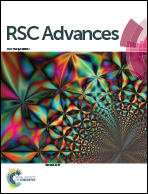Composition-induced phase evolution and high strain response in Ba(Zn1/3Nb2/3)O3-modified (Bi0.5Na0.5)TiO3-based lead-free ferroelectrics
Abstract
In this work, a paraelectric complex perovskite Ba(Zn1/3Nb2/3)O3 (BZN) was introduced into the morphotropic boundary composition (Bi0.5Na0.5)0.93Ba0.07TiO3 (BNBT) to modulate the phase structure and electrical properties as well as the field-induced strain behavior. Using a columbite route, the ceramics with pure perovskite structure were successfully fabricated. The structure and electrical measurements showed that the introduction of BZN into BNBT results in the decrease of the rhombohedrality 90-γ, and promotes the evolution from ferroelectric to antiferroelectric (AFE) relaxor. Besides, the introduction of BZN induces the volume increase and dimension reduction of the nanosized AFE relaxor domains. A large field-induced strain of 0.39% with good stability against frequency, field, and temperature was obtained at the BNZ addition of composition x = 0.01, which locates at the critical composition boundary between ferroelectric state and AFE relaxor state.

- This article is part of the themed collection: Editors' Collection: Ferroelectric and Multiferroic Materials


 Please wait while we load your content...
Please wait while we load your content...